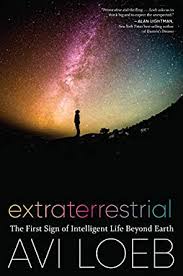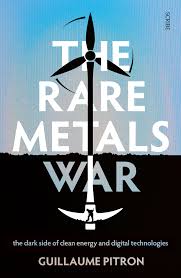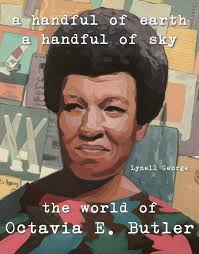David Boaz in The Huffington Post:
 Some people think libertarians only care about taxes and regulations. But I was asked not long ago, what’s the most important libertarian accomplishment in history? I said, “the abolition of slavery.”
Some people think libertarians only care about taxes and regulations. But I was asked not long ago, what’s the most important libertarian accomplishment in history? I said, “the abolition of slavery.”
The greatest libertarian crusade in history was the effort to abolish chattel slavery, culminating in the nineteenth‐century abolitionist movement and the heroic Underground Railroad. It’s no accident that abolitionism emerged out of the ferment of the Industrial Revolution and the American Revolution. How could Americans proclaim that “all men are created equal … endowed by their Creator with certain unalienable rights,” without noticing that they themselves were holding other men and women in bondage? They could not, of course. The ideas of the American Revolution — individualism, natural rights and free markets — led logically to agitation for the extension of civil and political rights to those who had been excluded from liberty, as they were from power — notably slaves, serfs and women. As the great English scholar Samuel Johnson wrote in 1775, “How is it that we hear the loudest yelps for liberty among the drivers of Negroes?”
The world’s first antislavery society was founded in Philadelphia that same year. Thomas Jefferson owned slaves, yet he included a passionate condemnation of slavery in his draft of the Declaration of Independence the following year: “[King George] has waged cruel war against human nature itself, violating its most sacred rights of life and liberty in the persons of a distant people who never offended him.” The Continental Congress deleted that passage, but Americans lived uneasily with the obvious contradiction between their commitment to individual rights and the institution of slavery.
More here. (Throughout February, at least one post will be dedicated to honoring Black History Month. The theme this year is: The Family)

 Released in the two-hundredth-anniversary year of the signing of the Declaration of Independence,
Released in the two-hundredth-anniversary year of the signing of the Declaration of Independence,  In an equation-dense paper that appeared in The Astrophysical Journal Letters a year after Weryk’s discovery, Loeb and a Harvard postdoc named Shmuel Bialy proposed that ‘Oumuamua’s “non-gravitational acceleration” was most economically explained by assuming that the object was manufactured. It might be the alien equivalent of an abandoned car, “floating in interstellar space” as “debris.” Or it might be “a fully operational probe” that had been dispatched to our solar system to reconnoitre. The second possibility, Loeb and Bialy suggested, was the more likely, since if the object was just a piece of alien junk, drifting through the galaxy, the odds of our having come across it would be absurdly low. “In contemplating the possibility of an artificial origin, we should keep in mind what Sherlock Holmes said: ‘when you have excluded the impossible, whatever remains, however improbable, must be the truth,’ ” Loeb
In an equation-dense paper that appeared in The Astrophysical Journal Letters a year after Weryk’s discovery, Loeb and a Harvard postdoc named Shmuel Bialy proposed that ‘Oumuamua’s “non-gravitational acceleration” was most economically explained by assuming that the object was manufactured. It might be the alien equivalent of an abandoned car, “floating in interstellar space” as “debris.” Or it might be “a fully operational probe” that had been dispatched to our solar system to reconnoitre. The second possibility, Loeb and Bialy suggested, was the more likely, since if the object was just a piece of alien junk, drifting through the galaxy, the odds of our having come across it would be absurdly low. “In contemplating the possibility of an artificial origin, we should keep in mind what Sherlock Holmes said: ‘when you have excluded the impossible, whatever remains, however improbable, must be the truth,’ ” Loeb  Everywhere rare metals are mined – be it the Democratic Republic of Congo (where conditions in the mines are ‘straight out of the Middle Ages’), Kazakhstan or Vietnam – pollution and environmental destruction follow. Safety standards aside, it’s hugely inefficient. Know how much lutetium you’ll get from extracting, crushing and refining 1,200 tonnes of rock? One solitary kilogram.
Everywhere rare metals are mined – be it the Democratic Republic of Congo (where conditions in the mines are ‘straight out of the Middle Ages’), Kazakhstan or Vietnam – pollution and environmental destruction follow. Safety standards aside, it’s hugely inefficient. Know how much lutetium you’ll get from extracting, crushing and refining 1,200 tonnes of rock? One solitary kilogram. Years ago, Maria Stepanova visited the United States Holocaust Memorial Museum in Washington DC to do research for a book she would end up working on for 30 years. After telling him of her plan, the museum adviser replied: “Ah. One of those books where the author travels around the world in search of his or her roots – there are plenty of those now.” “Yes,” replied Stepanova. “And now there will be one more.”
Years ago, Maria Stepanova visited the United States Holocaust Memorial Museum in Washington DC to do research for a book she would end up working on for 30 years. After telling him of her plan, the museum adviser replied: “Ah. One of those books where the author travels around the world in search of his or her roots – there are plenty of those now.” “Yes,” replied Stepanova. “And now there will be one more.” Identical twins have nothing on black holes. Twins may grow from the same genetic blueprints, but they can differ in a thousand ways — from temperament to hairstyle. Black holes, according to Albert Einstein’s theory of gravity, can have just three characteristics — mass, spin and charge. If those values are the same for any two black holes, it is impossible to discern one twin from the other. Black holes, they say, have no hair.
Identical twins have nothing on black holes. Twins may grow from the same genetic blueprints, but they can differ in a thousand ways — from temperament to hairstyle. Black holes, according to Albert Einstein’s theory of gravity, can have just three characteristics — mass, spin and charge. If those values are the same for any two black holes, it is impossible to discern one twin from the other. Black holes, they say, have no hair. When the anthropologist Irven DeVore suggested in 1962 to then-graduate student Richard Lee that they study hunter-gatherers, neither expected to transform the modern understanding of human nature. A baboon expert, DeVore mostly wanted to expand his research to human groups. Lee was searching for a dissertation project. Being interested in human evolution, they decided not to study peoples in the Americas or Australia, as was the norm in hunter-gatherer studies. Instead, they looked for a site that was, in Lee’s words, ‘close to the actual faunal and floral environment occupied by early man’. So, they headed to Africa – specifically, to the Kalahari.
When the anthropologist Irven DeVore suggested in 1962 to then-graduate student Richard Lee that they study hunter-gatherers, neither expected to transform the modern understanding of human nature. A baboon expert, DeVore mostly wanted to expand his research to human groups. Lee was searching for a dissertation project. Being interested in human evolution, they decided not to study peoples in the Americas or Australia, as was the norm in hunter-gatherer studies. Instead, they looked for a site that was, in Lee’s words, ‘close to the actual faunal and floral environment occupied by early man’. So, they headed to Africa – specifically, to the Kalahari. Johann Wolfgang von Goethe, the 18th-century poet and philosopher, believed life was hardwired with archetypes, or models, which instructed its development. Yet he was fascinated with how life could, at the same time, be so malleable. One day, while meditating on a leaf, the poet had what you might call a proto-evolutionary thought: Plants were never created “and then locked into the given form” but have instead been given, he later wrote, a “felicitous mobility and plasticity that allows them to grow and adapt themselves to many different conditions in many different places.” A rediscovery of principles of genetic inheritance in the early 20th century showed that organisms could not learn or acquire heritable traits by interacting with their environment, but they did not yet explain how life could undergo such shapeshifting tricks—the plasticity that fascinated Goethe.
Johann Wolfgang von Goethe, the 18th-century poet and philosopher, believed life was hardwired with archetypes, or models, which instructed its development. Yet he was fascinated with how life could, at the same time, be so malleable. One day, while meditating on a leaf, the poet had what you might call a proto-evolutionary thought: Plants were never created “and then locked into the given form” but have instead been given, he later wrote, a “felicitous mobility and plasticity that allows them to grow and adapt themselves to many different conditions in many different places.” A rediscovery of principles of genetic inheritance in the early 20th century showed that organisms could not learn or acquire heritable traits by interacting with their environment, but they did not yet explain how life could undergo such shapeshifting tricks—the plasticity that fascinated Goethe. Today’s selection — from Zora and Langston by
Today’s selection — from Zora and Langston by  Butler was 58 when Fledgling was published, and barely a year later, she fell and hit her head on an icy pavement and died. Her papers arrived at the Huntington in 2008: two filing cabinets and 35 large cardboard boxes, containing drafts, notes, sums, receipts and bills, an order form for men’s-size Star Trek jerseys; to-do lists and to-get lists – ‘Potatoes
Butler was 58 when Fledgling was published, and barely a year later, she fell and hit her head on an icy pavement and died. Her papers arrived at the Huntington in 2008: two filing cabinets and 35 large cardboard boxes, containing drafts, notes, sums, receipts and bills, an order form for men’s-size Star Trek jerseys; to-do lists and to-get lists – ‘Potatoes Madlib has always seemed more concerned with making music than with the question of what to do with it. The forty-seven-year-old producer and multi-instrumentalist has estimated that he makes hundreds of beats a week, many of which he never shares with anyone. His beats are a form of homage. He listens carefully to an old record, trying to squeeze every musical possibility out of it, to follow every path not taken. Sometimes it’s therapeutic. The week that Prince died, Madlib mourned by making tracks built on Prince samples. Following the death of his collaborator J Dilla, and then that of MF DOOM, he stayed awake for days, making hundreds of hours of music. Since the nineties, Madlib has essentially been building a private, ever-expanding library of beats, which spans everything from hip-hop, jazz, and soul to German rock, industrial music, Brazilian funk, and Bollywood. He has released dozens of albums under just as many aliases. Sometimes the aliases splinter off to form side projects. For Madlib, making music is as elemental as eating or sleeping, though he claims to do very little of the latter.
Madlib has always seemed more concerned with making music than with the question of what to do with it. The forty-seven-year-old producer and multi-instrumentalist has estimated that he makes hundreds of beats a week, many of which he never shares with anyone. His beats are a form of homage. He listens carefully to an old record, trying to squeeze every musical possibility out of it, to follow every path not taken. Sometimes it’s therapeutic. The week that Prince died, Madlib mourned by making tracks built on Prince samples. Following the death of his collaborator J Dilla, and then that of MF DOOM, he stayed awake for days, making hundreds of hours of music. Since the nineties, Madlib has essentially been building a private, ever-expanding library of beats, which spans everything from hip-hop, jazz, and soul to German rock, industrial music, Brazilian funk, and Bollywood. He has released dozens of albums under just as many aliases. Sometimes the aliases splinter off to form side projects. For Madlib, making music is as elemental as eating or sleeping, though he claims to do very little of the latter. The Democratic Party’s repudiation of these voters’ views as “deplorable” or “racist” stoked resentment of urban elites, driving many in search of a new political home. When Donald Trump appeared before workers and farmers in his red baseball cap, he articulated their antipathies coarsely but effectively. A louche product of a milieu in which shady real-estate deals skirted the world of organized crime, Trump shared some of the class resentment of people who could only dream of his wealth. Trump became their savior, and tied the Republican Party firmly to hard-right populism. Even without Trump as president, the GOP will remain his party for a long time.
The Democratic Party’s repudiation of these voters’ views as “deplorable” or “racist” stoked resentment of urban elites, driving many in search of a new political home. When Donald Trump appeared before workers and farmers in his red baseball cap, he articulated their antipathies coarsely but effectively. A louche product of a milieu in which shady real-estate deals skirted the world of organized crime, Trump shared some of the class resentment of people who could only dream of his wealth. Trump became their savior, and tied the Republican Party firmly to hard-right populism. Even without Trump as president, the GOP will remain his party for a long time. By the time Mudassir Azeemi wrote to Apple CEO Tim Cook in 2014, he’d tried everything he could think of to make it easier to type in his native language, Urdu. In 2010, the now 42-year-old Pakistani-American developed a keyboard app you could use on iOS devices; within two years, it had been downloaded over 165,000 times. But even with an Urdu-language keyboard, the characters appeared on the screen in an entirely different font.
By the time Mudassir Azeemi wrote to Apple CEO Tim Cook in 2014, he’d tried everything he could think of to make it easier to type in his native language, Urdu. In 2010, the now 42-year-old Pakistani-American developed a keyboard app you could use on iOS devices; within two years, it had been downloaded over 165,000 times. But even with an Urdu-language keyboard, the characters appeared on the screen in an entirely different font. Third Wave Antiracism is losing innocent people jobs. It is coloring, detouring and sometimes strangling academic inquiry. It forces us to render a great deal of our public discussion of urgent issues in doubletalk any 10-year-old can see through. It forces us to start teaching our actual 10-year-olds, in order to hold them off from spoiling the show in that way, to believe in sophistry in the name of enlightenment. On that, Third Wave Antiracism guru Ibram X. Kendi has written a book on how to raise antiracist children called Antiracist Baby. You couldn’t imagine it better: Are we in a Christopher Guest movie? This and so much else is a sign that Third Wave Antiracism forces us to pretend that performance art is politics. It forces us to spend endless amounts of time listening to nonsense presented as wisdom, and pretend to like it.
Third Wave Antiracism is losing innocent people jobs. It is coloring, detouring and sometimes strangling academic inquiry. It forces us to render a great deal of our public discussion of urgent issues in doubletalk any 10-year-old can see through. It forces us to start teaching our actual 10-year-olds, in order to hold them off from spoiling the show in that way, to believe in sophistry in the name of enlightenment. On that, Third Wave Antiracism guru Ibram X. Kendi has written a book on how to raise antiracist children called Antiracist Baby. You couldn’t imagine it better: Are we in a Christopher Guest movie? This and so much else is a sign that Third Wave Antiracism forces us to pretend that performance art is politics. It forces us to spend endless amounts of time listening to nonsense presented as wisdom, and pretend to like it.